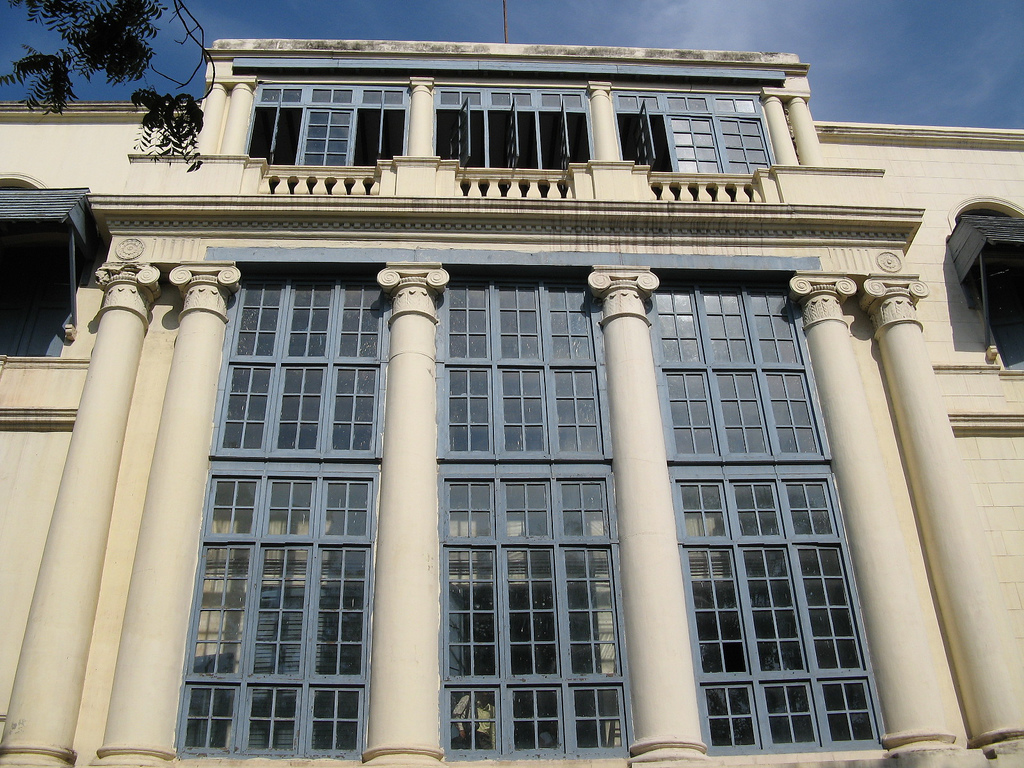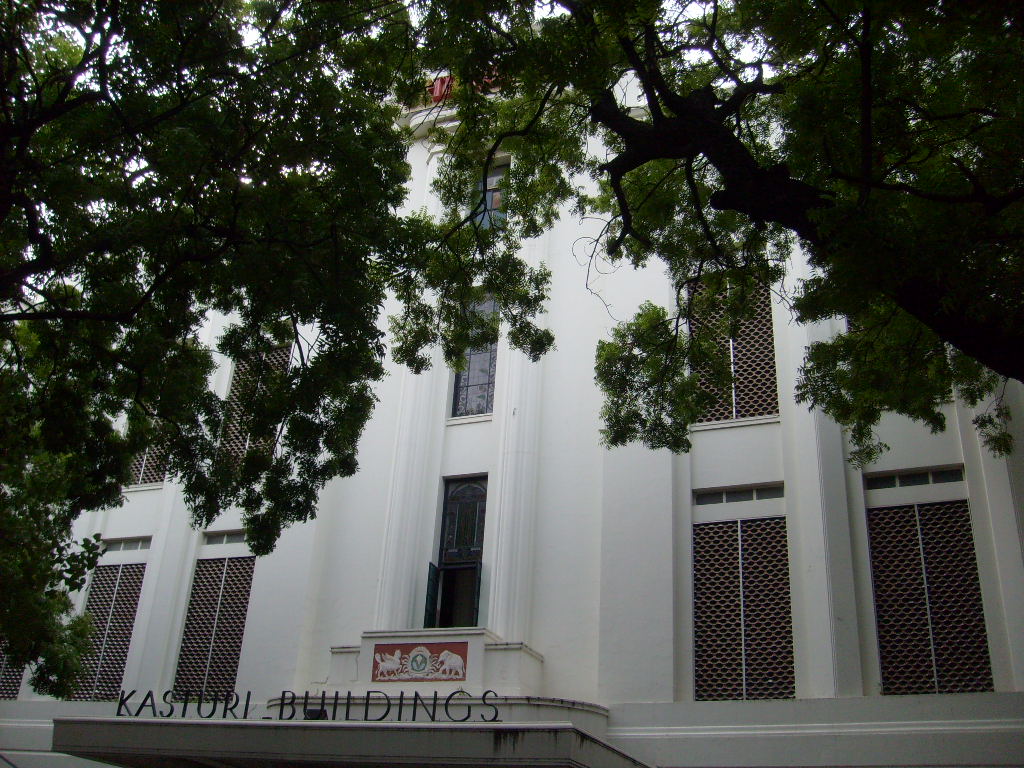|
V. Venkayya
Rai Bahadur Valaiyattur Venkayya (1 July 1864 – 21 November 1912) was an Indian epigraphist and historian. He served as the Chief Epigraphist to the Government of India from 1908 to 1912. Early life Venkayya was born on 1 July 1864 in the town of Valaiyattur near Arni in the then North Arcot district. His father Appa Sitarama Ayyar, a Tamil scholar, was a direct descendant of ''Advaita'' savant Appayya Dikshitar. Venkayya graduated in Physics from the University of Madras. Career Venkayya's mastery of South Indian languages and scripts was recognised by E. Hultzsch who inducted him to the epigraphical department of the Madras government. Venkayya served as Chief Epigraphist to the Government of Madras until 1908, and then succeeded Hultzsch on his retirement, as the Chief Epigraphist to the Government of India. Venkayya made a pioneering effort in studying inscriptions in Brihadeeswarar Temple in Tanjore and temples in the Pallava and Pandya countries. He also made ... [...More Info...] [...Related Items...] OR: [Wikipedia] [Google] [Baidu] |
Rai Bahadur
RAI – Radiotelevisione italiana (; commercially styled as Rai since 2000; known until 1954 as Radio Audizioni Italiane) is the national public broadcasting company of Italy, owned by the Ministry of Economy and Finance. RAI operates many terrestrial and subscription television channels and radio stations. It is one of the biggest broadcasters in Italy competing with Mediaset, and other minor radio and television networks. RAI has a relatively high television audience share of 35.9%. RAI broadcasts are also received in surrounding countries, including Albania, Bosnia, Croatia, France, Malta, Monaco, Montenegro, San Marino, Slovenia, Switzerland, Tunisia and the Vatican City, and elsewhere on pay television and some channels FTA across Europe including UK on the Hotbird satellite. Half of RAI's revenues come from broadcast receiving licence fees, the remainder from the sale of advertising time. [...More Info...] [...Related Items...] OR: [Wikipedia] [Google] [Baidu] |
Brihadeeswarar Temple
Brihadishvara Temple, called Rajarajesvaram () by its builder, and known locally as ''Thanjai Periya Kovil'' ("Thanjavur Big Temple") and ''Peruvudaiyar Kovil'', is a Shaivite Hindu temple built in a Chola architectural style located on the south bank of the Cauvery river in Thanjavur, Tamil Nadu, India.Thanjavur Encyclopaedia Britannica It is one of the largest Hindu temples and an exemplar of Tamil architecture. It is also called ''Dakshina Meru'' (" Meru of the [...More Info...] [...Related Items...] OR: [Wikipedia] [Google] [Baidu] |
University Of Madras Alumni
A university () is an institution of higher (or tertiary) education and research which awards academic degrees in several academic disciplines. ''University'' is derived from the Latin phrase ''universitas magistrorum et scholarium'', which roughly means "community of teachers and scholars". Universities typically offer both undergraduate and postgraduate programs. The first universities in Europe were established by Catholic Church monks. The University of Bologna (), Italy, which was founded in 1088, is the first university in the sense of: *being a high degree-awarding institute. *using the word ''universitas'' (which was coined at its foundation). *having independence from the ecclesiastic schools and issuing secular as well as non-secular degrees (with teaching conducted by both clergy and non-clergy): grammar, rhetoric, logic, theology, canon law, notarial law.Hunt Janin: "The university in medieval life, 1179–1499", McFarland, 2008, , p. 55f.de Ridder-Symoens, Hilde' ... [...More Info...] [...Related Items...] OR: [Wikipedia] [Google] [Baidu] |
19th-century Indian Archaeologists
The 19th (nineteenth) century began on 1 January 1801 ( MDCCCI), and ended on 31 December 1900 ( MCM). The 19th century was the ninth century of the 2nd millennium. The 19th century was characterized by vast social upheaval. Slavery was abolished in much of Europe and the Americas. The First Industrial Revolution, though it began in the late 18th century, expanding beyond its British homeland for the first time during this century, particularly remaking the economies and societies of the Low Countries, the Rhineland, Northern Italy, and the Northeastern United States. A few decades later, the Second Industrial Revolution led to ever more massive urbanization and much higher levels of productivity, profit, and prosperity, a pattern that continued into the 20th century. The Islamic gunpowder empires fell into decline and European imperialism brought much of South Asia, Southeast Asia, and almost all of Africa under colonial rule. It was also marked by the collapse of the lar ... [...More Info...] [...Related Items...] OR: [Wikipedia] [Google] [Baidu] |
Madras Christian College Alumni
Chennai (, ), formerly known as Madras ( the official name until 1996), is the capital city of Tamil Nadu, the southernmost Indian state. The largest city of the state in area and population, Chennai is located on the Coromandel Coast of the Bay of Bengal. According to the 2011 Indian census, Chennai is the sixth-most populous city in the country and forms the fourth-most populous urban agglomeration. The Greater Chennai Corporation is the civic body responsible for the city; it is the oldest city corporation of India, established in 1688—the second oldest in the world after London. The city of Chennai is coterminous with Chennai district, which together with the adjoining suburbs constitutes the Chennai Metropolitan Area, the 36th-largest urban area in the world by population and one of the largest metropolitan economies of India. The traditional and de facto gateway of South India, Chennai is among the most-visited Indian cities by foreign tourists. It was ranked th ... [...More Info...] [...Related Items...] OR: [Wikipedia] [Google] [Baidu] |
1912 Deaths
Year 191 ( CXCI) was a common year starting on Friday (link will display the full calendar) of the Julian calendar. At the time, it was known as the Year of the Consulship of Apronianus and Bradua (or, less frequently, year 944 ''Ab urbe condita''). The denomination 191 for this year has been used since the early medieval period, when the Anno Domini calendar era became the prevalent method in Europe for naming years. Events By place Parthia * King Vologases IV of Parthia dies after a 44-year reign, and is succeeded by his son Vologases V. China * A coalition of Chinese warlords from the east of Hangu Pass launches a punitive campaign against the warlord Dong Zhuo, who seized control of the central government in 189, and held the figurehead Emperor Xian hostage. After suffering some defeats against the coalition forces, Dong Zhuo forcefully relocates the imperial capital from Luoyang to Chang'an. Before leaving, Dong Zhuo orders his troops to loot the tombs of th ... [...More Info...] [...Related Items...] OR: [Wikipedia] [Google] [Baidu] |
1864 Births
Events January–March * January 13 – American songwriter Stephen Foster (" Oh! Susanna", " Old Folks at Home") dies aged 37 in New York City, leaving a scrap of paper reading "Dear friends and gentle hearts". His parlor song "Beautiful Dreamer" is published in March. * January 16 – Denmark rejects an Austrian-Prussian ultimatum to repeal the Danish Constitution, which says that Schleswig-Holstein is part of Denmark. * January 21 – New Zealand Wars: The Tauranga campaign begins. * February – John Wisden publishes ''Wisden Cricketers' Almanack, The Cricketer's Almanack for the year 1864'' in England; it will go on to become the major annual cricket reference publication. * February 1 – Danish-Prussian War (Second Schleswig War): 57,000 Austrian and Prussian troops cross the Eider River into Denmark. * February 15 – Heineken N.V., Heineken brewery founded in Netherlands. * February 17 – American Civil War: The tiny Confederate ... [...More Info...] [...Related Items...] OR: [Wikipedia] [Google] [Baidu] |
Velurpalaiyam Plates
The Velurpalaiyam plates of Nandivarman III is a 9th-century copper-plate grant which was found at the village of Velurpalaiyam, around 7 miles from the town of Arakkonam in Tamil Nadu, India. The grant records the gift of a village to a temple of Shiva by the Pallava king, Nandivarman III (). The inscriptions on the plates are in Tamil and partly in Sanskrit Sanskrit (; attributively , ; nominalization, nominally , , ) is a classical language belonging to the Indo-Aryan languages, Indo-Aryan branch of the Indo-European languages. It arose in South Asia after its predecessor languages had Trans-cul ... (employing the Grantha script) and additionally provide a valuable genealogical record of the Pallavas. References {{Reflist Indian inscriptions ... [...More Info...] [...Related Items...] OR: [Wikipedia] [Google] [Baidu] |
The Hindu
''The Hindu'' is an Indian English-language daily newspaper owned by The Hindu Group, headquartered in Chennai, Tamil Nadu. It began as a weekly in 1878 and became a daily in 1889. It is one of the Indian newspapers of record and the second most circulated English-language newspaper in India, after '' The Times of India''. , ''The Hindu'' is published from 21 locations across 11 states of India. ''The Hindu'' has been a family-owned newspaper since 1905, when it was purchased by S. Kasturi Ranga Iyengar from the original founders. It is now jointly owned by Iyengar's descendants, referred to as the "Kasturi family", who serve as the directors of the holding company. The current chairperson of the group is Malini Parthasarathy, a great-granddaughter of Iyengar. Except for a period of about two years, when S. Varadarajan held the editorship of the newspaper, the editorial positions of the paper were always held by members of the family or held under their direction. His ... [...More Info...] [...Related Items...] OR: [Wikipedia] [Google] [Baidu] |
Parthia
Parthia ( peo, 𐎱𐎼𐎰𐎺 ''Parθava''; xpr, 𐭐𐭓𐭕𐭅 ''Parθaw''; pal, 𐭯𐭫𐭮𐭥𐭡𐭥 ''Pahlaw'') is a historical region located in northeastern Greater Iran. It was conquered and subjugated by the empire of the Medes during the 7th century BC, was incorporated into the subsequent Achaemenid Empire under Cyrus the Great in the 6th century BC, and formed part of the Hellenistic Seleucid Empire following the 4th-century-BC conquests of Alexander the Great. The region later served as the political and cultural base of the Eastern Iranian Parni people and Arsacid dynasty, rulers of the Parthian Empire (247 BC – 224 AD). The Sasanian Empire, the last state of pre-Islamic Iran, also held the region and maintained the seven Parthian clans as part of their feudal aristocracy. Name The name "Parthia" is a continuation from Latin ', from Old Persian ', which was the Parthian language self-designator signifying "of the Parthians" who were an Iranian peo ... [...More Info...] [...Related Items...] OR: [Wikipedia] [Google] [Baidu] |
Epigraphia Indica
''Epigraphia Indica'' was the official publication of Archaeological Survey of India from 1882 to 1977. The first volume was edited by James Burgess in the year 1882. Between 1892 and 1920 it was published as a quarterly supplement to ''The Indian Antiquary''. Temple, Richard Carnac. (1922) Fifty years of The Indian Antiquary'. Mazgaon, Bombay: B. Miller, British India Press, pp. 3-4. One part is brought out in each quarter year and eight parts make one volume of this periodical; so that one volume is released once in two years. About 43 volumes of this journal have been published so far. They have been edited by the officers who headed the Epigraphy Branch of ASI. Editors * J. Burgess: Vol I (1882) & Vol II (1894) * E. Hultzsch: Vol III (1894–95), Vol IV (1896–97), Vol V (1898–99), Vol VI (1900–01), Vol VII (1902–03), Vol VIII (1905–06), Vol IX (1907–08) * Sten Konow: Vol X (1909–10), Vol XI (1911–12), Vol XII (1913–14), Vol XIII (1915–16) * F. W. Thom ... [...More Info...] [...Related Items...] OR: [Wikipedia] [Google] [Baidu] |





